580-13-2
| 中文名 | 2-溴代萘 |
|---|---|
| 英文名 | 2-Bromonaphthalene |
| 中文别名 |
Β-溴代萘
2-溴化萘 β-溴萘 2-溴萘 |
| 英文别名 |
2-bromo-naphthalene
2-Bromonaphthalene EINECS 209-452-5 MFCD00004051 Naphthalene,2-bromo 2-naphthylbromide 2-Naphthyl bromide β-Bromonaphthalene 2-naphthyl-Br Naphthalene, 2-bromo- β-Naphthyl bromide 2-BROMO NAPHTHALENE |
| 密度 | 1.5±0.1 g/cm3 |
|---|---|
| 沸点 | 282.7±9.0 °C at 760 mmHg |
| 熔点 | 52-55 °C(lit.) |
| 分子式 | C10H7Br |
| 分子量 | 207.067 |
| 闪点 | 127.8±13.1 °C |
| 精确质量 | 205.973099 |
| LogP | 4.22 |
| 外观性状 | 无色晶体。 不溶于水,可溶于乙醇、乙醚、苯、氯仿。 |
| 蒸汽压 | 0.0±0.6 mmHg at 25°C |
| 折射率 | 1.663 |
| 储存条件 | 本品应密封避光保存。 |
| 水溶解性 | slightly soluble |
| 分子结构 | 分子性质数据: 1、 摩尔折射率:51.78 2、 摩尔体积(cm3/mol):139.7 3、 等张比容(90.2K):361.6 4、 表面张力(dyne/cm):44.8 5、 极化率(10-24cm3):20.52 |
| 计算化学 | 1.疏水参数计算参考值(XlogP):无 2.氢键供体数量:0 3.氢键受体数量:0 4.可旋转化学键数量:0 5.互变异构体数量:无 6.拓扑分子极性表面积0 7.重原子数量:11 8.表面电荷:0 9.复杂度:133 10.同位素原子数量:0 11.确定原子立构中心数量:0 12.不确定原子立构中心数量:0 13.确定化学键立构中心数量:0 14.不确定化学键立构中心数量:0 15.共价键单元数量:1 |
| 更多 | 1. 性状:白色或微黄色针状结晶。 2. 密度(g/mL,25/4℃):1.60 3. 相对密度(20℃,4℃):1.6050 4. 熔点(ºC):59℃(54~56℃) 5. 沸点(ºC,常压):281.5 6. 沸点(ºC,5.2kPa):未确定 7. 常温折射率(n25):1.638260 8. 闪点(ºC): 未确定 9. 比旋光度(º):未确定 10. 自燃点或引燃温度(ºC):未确定 11. 蒸气压(kPa,25ºC):未确定 12. 饱和蒸气压(kPa,60ºC):未确定 13. 燃烧热(KJ/mol):未确定 14. 临界温度(ºC):未确定 15. 临界压力(KPa):未确定 16. 油水(辛醇/水)分配系数的对数值:未确定 17. 爆炸上限(%,V/V):未确定 18. 爆炸下限(%,V/V):未确定 19. 溶解性:易溶于苯、乙醇、乙醚、氯仿和二硫化碳,微溶于水。 |
Synonym:Tert-Butyl Bromid Section 2 - COMPOSITION, INFORMATION ON INGREDIENTS
Risk Phrases: None Listed. Section 3 - HAZARDS IDENTIFICATION EMERGENCY OVERVIEW
The toxicological properties of this material have not been fully investigated. Potential Health Effects Eye: May cause eye irritation. The toxicological properties of this material have not been fully investigated. Skin: May cause skin irritation. The toxicological properties of this material have not been fully investigated. Ingestion: May cause gastrointestinal irritation with nausea, vomiting and diarrhea. The toxicological properties of this substance have not been fully investigated. Inhalation: May cause respiratory tract irritation. The toxicological properties of this substance have not been fully investigated. Chronic: No information found. Section 4 - FIRST AID MEASURES Eyes: Flush eyes with plenty of water for at least 15 minutes, occasionally lifting the upper and lower eyelids. Get medical aid immediately. Skin: Get medical aid. Flush skin with plenty of water for at least 15 minutes while removing contaminated clothing and shoes. Wash clothing before reuse. Ingestion: Never give anything by mouth to an unconscious person. Get medical aid immediately. Do NOT induce vomiting. If conscious and alert, rinse mouth and drink 2-4 cupfuls of milk or water. Inhalation: Remove from exposure and move to fresh air immediately. If not breathing, give artificial respiration. If breathing is difficult, give oxygen. Get medical aid. Notes to Physician: Section 5 - FIRE FIGHTING MEASURES General Information: As in any fire, wear a self-contained breathing apparatus in pressure-demand, MSHA/NIOSH (approved or equivalent), and full protective gear. During a fire, irritating and highly toxic gases may be generated by thermal decomposition or combustion. Vapors may be heavier than air. They can spread along the ground and collect in low or confined areas. Extinguishing Media: Use agent most appropriate to extinguish fire. Use water spray, dry chemical, carbon dioxide, or appropriate foam. Section 6 - ACCIDENTAL RELEASE MEASURES General Information: Use proper personal protective equipment as indicated in Section 8. Spills/Leaks: Clean up spills immediately, observing precautions in the Protective Equipment section. Sweep up, then place into a suitable container for disposal. Avoid generating dusty conditions. Provide ventilation. Section 7 - HANDLING and STORAGE Handling: Wash thoroughly after handling. Use with adequate ventilation. Avoid contact with eyes, skin, and clothing. Keep container tightly closed. Avoid ingestion and inhalation. Storage: Store in a tightly closed container. Store in a cool, dry, well-ventilated area away from incompatible substances. Section 8 - EXPOSURE CONTROLS, PERSONAL PROTECTION Engineering Controls: Use adequate ventilation to keep airborne concentrations low. Exposure Limits CAS# 580-13-2: Personal Protective Equipment Eyes: Wear appropriate protective eyeglasses or chemical safety goggles as described by OSHA's eye and face protection regulations in 29 CFR 1910.133 or European Standard EN166. Skin: Wear appropriate protective gloves to prevent skin exposure. Clothing: Wear appropriate protective clothing to prevent skin exposure. Respirators: Follow the OSHA respirator regulations found in 29 CFR 1910.134 or European Standard EN 149. Use a NIOSH/MSHA or European Standard EN 149 approved respirator if exposure limits are exceeded or if irritation or other symptoms are experienced. Section 9 - PHYSICAL AND CHEMICAL PROPERTIES Physical State: Crystalline powder Color: white Odor: none reported pH: Not available. Vapor Pressure: Not available. Viscosity: Not available. Boiling Point: 281 - 282 deg C Freezing/Melting Point: 52 - 55 deg C Autoignition Temperature: Not available. Flash Point: > 112 deg C (> 233.60 deg F) Explosion Limits, lower: N/A Explosion Limits, upper: N/A Decomposition Temperature: Solubility in water: slightly soluble in water Specific Gravity/Density: Molecular Formula: C10H7Br Molecular Weight: 207.07 Section 10 - STABILITY AND REACTIVITY Chemical Stability: Stable under normal temperatures and pressures. Conditions to Avoid: Incompatible materials, dust generation, excess heat. Incompatibilities with Other Materials: Oxidizing agents. Hazardous Decomposition Products: Irritating and toxic fumes and gases, bromine fumes, bromine. Hazardous Polymerization: Has not been reported. Section 11 - TOXICOLOGICAL INFORMATION RTECS#: CAS# 580-13-2 unlisted. LD50/LC50: Not available. Carcinogenicity: 2-Bromonaphthalene - Not listed by ACGIH, IARC, or NTP. Section 12 - ECOLOGICAL INFORMATION Section 13 - DISPOSAL CONSIDERATIONS Dispose of in a manner consistent with federal, state, and local regulations. Section 14 - TRANSPORT INFORMATION IATA Not regulated as a hazardous material. IMO Not regulated as a hazardous material. RID/ADR Not regulated as a hazardous material. Section 15 - REGULATORY INFORMATION European/International Regulations European Labeling in Accordance with EC Directives Hazard Symbols: Not available. Risk Phrases: Safety Phrases: S 24/25 Avoid contact with skin and eyes. S 28A After contact with skin, wash immediately with plenty of water. S 37 Wear suitable gloves. S 45 In case of accident or if you feel unwell, seek medical advice immediately (show the label where possible). WGK (Water Danger/Protection) CAS# 580-13-2: No information available. Canada CAS# 580-13-2 is listed on Canada's NDSL List. CAS# 580-13-2 is not listed on Canada's Ingredient Disclosure List. US FEDERAL TSCA CAS# 580-13-2 is listed on the TSCA inventory. SECTION 16 - ADDITIONAL INFORMATION N/A |
| 符号 |

GHS07 |
|---|---|
| 信号词 | Warning |
| 危害声明 | H302-H319 |
| 警示性声明 | P305 + P351 + P338 |
| 个人防护装备 | dust mask type N95 (US);Eyeshields;Gloves |
| 危害码 (欧洲) | Xn:Harmful; |
| 风险声明 (欧洲) | R22;R36 |
| 安全声明 (欧洲) | S26-S36-S45-S36/37 |
| 危险品运输编码 | UN 1230 3/PG 2 |
| WGK德国 | 3 |
| 海关编码 | 29036990 |
| 上游产品 9 | |
|---|---|
| 下游产品 10 | |
| 海关编码 | 2903999090 |
|---|---|
| 中文概述 | 2903999090 其他芳烃卤化衍生物. 增值税率:17.0% 退税率:9.0% 监管条件:无 最惠国关税:5.5% 普通关税:30.0% |
| 申报要素 | 品名, 成分含量, 用途 |
| Summary | 2903999090 halogenated derivatives of aromatic hydrocarbons VAT:17.0% Tax rebate rate:9.0% Supervision conditions:none MFN tariff:5.5% General tariff:30.0% |


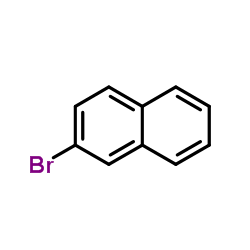

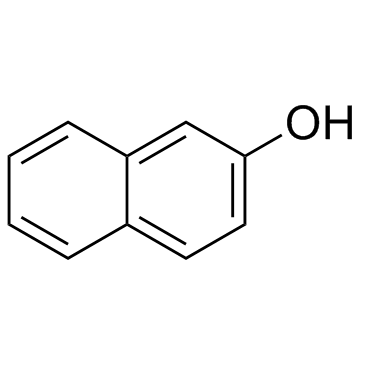
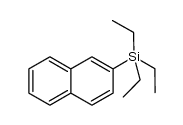
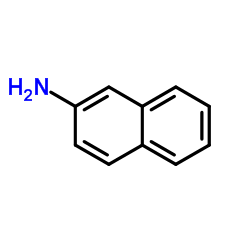
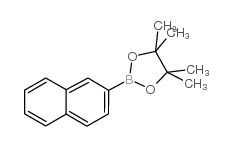

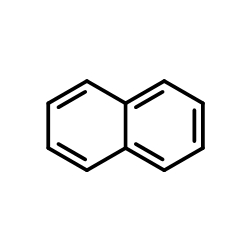


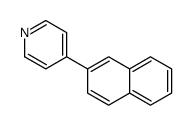
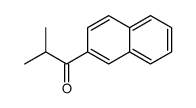
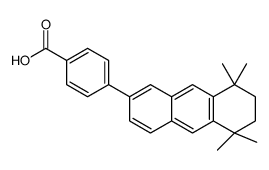
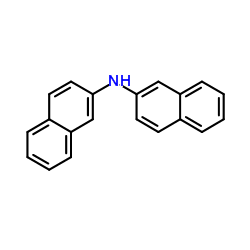
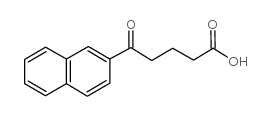
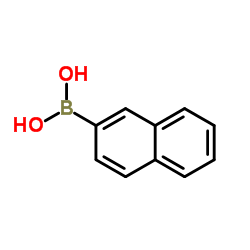



 0.55mol三苯基磷和125mL乙腈的混合物在冰浴中冷却,搅拌下滴加88g溴,反应温度保持在40℃以下。加溴后撤去冰浴,加入0.5mol2-萘酚和100mL乙腈配成,于60~70℃加热0.5h以上,然后蒸出乙腈。升高温度至所有固体熔化,搅拌下升至340℃,直至不再有溴化氢放出。反应物冷却至100℃左右倒入烧杯中,继续冷至室温,加入300mL庚烷或石油醚,使固体成细沉淀,过滤,用300mL戊烷洗涤两次。合并滤液及戊烷萃取液,用200mL20%氢氧化钠清洗,并用无水硫酸镁干燥,最后通过状态蒸馏得2-溴萘72~81g,产率70%~80%。
0.55mol三苯基磷和125mL乙腈的混合物在冰浴中冷却,搅拌下滴加88g溴,反应温度保持在40℃以下。加溴后撤去冰浴,加入0.5mol2-萘酚和100mL乙腈配成,于60~70℃加热0.5h以上,然后蒸出乙腈。升高温度至所有固体熔化,搅拌下升至340℃,直至不再有溴化氢放出。反应物冷却至100℃左右倒入烧杯中,继续冷至室温,加入300mL庚烷或石油醚,使固体成细沉淀,过滤,用300mL戊烷洗涤两次。合并滤液及戊烷萃取液,用200mL20%氢氧化钠清洗,并用无水硫酸镁干燥,最后通过状态蒸馏得2-溴萘72~81g,产率70%~80%。